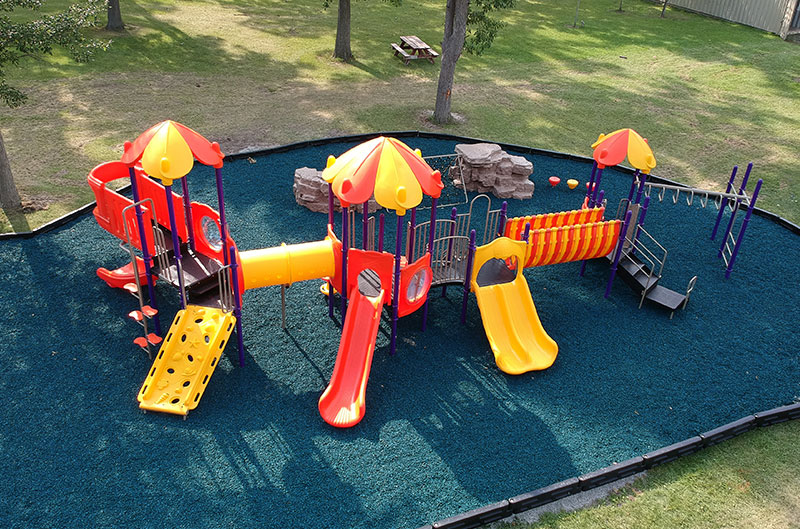
Why Your Playground Would Be Better With a Theme
Author: Austin Stanfel
Playgrounds are unique places capable of keeping kids entertained for hours and aiding in physical, emotional, social, and cognitive child development. Almost every adult has fond memories of a playground somewhere: the McDonald’s playground that was the only thing better than their ice cream; the community playground where there was always one kid who just wanted to swing; or the school or church playground that was equipped with enough kids for the most epic of freeze tag games. Playgrounds are places where imagination and creativity flourish. Here are four ways themed playgrounds are helping to nurture creativity in kids of all ages.
Getting kids’ attention
Themed playgrounds have a remarkable ability to grab a child’s attention. In a world of video games, virtual reality, and increased digital media, the standard playground set-up of swings, slide, and climbing structures can get old quickly. Themed playgrounds bring a new spice to the old that captures kids’ interest. The rope swings are much interesting if they’re the rainforest vines to swing over a pit of plastic alligators. A slide that leads from the gangplank of a pirate ship is much more thrilling. The monkey bars are more fun to master if they’re the key elements of a circus act.
Encouraging role-playing
Playgrounds are fantastic at encouraging kids to be physically active and get out some of that energy that drives parents crazy. But there’s no reason physical activity shouldn’t also include a creative, imaginative element. Themed playgrounds encourage this by putting children’s favorite physical playground equipment in a new, imaginative setting. Kids love playing pretend. Make-believe allows kids to try out new personalities, new skills, and new social roles that they may later make their own. It’s much easier for kids to get into the spirit of role-playing and make-believe when they’re already in a themed setting that puts kids in a new setting.
Producing teamwork
Make-believe is the live-action kids’ version of Dungeons and Dragons. Each group of kids has their own “rules” to their role-playing, their storylines, and their own goals to achieve to “win” the game. These naturally evolve as kids play together and talk. This helps children learn teamwork and all that comes with it: conflict resolution, compromise, negotiation, and more. Themed playgrounds already encourage kids to play pretend in their new setting, but they also have a unifying effect of giving kids a baseline setting. Every child on the playground will be playing some form of pirates or sailor on a ship-themed playground. This helps kids come together as they’re all starting their role-playing from the same setting. One child isn’t playing medieval knights while the other is playing superheroes. This encourages kids to play and work together.
Creating social opportunities
Because role-playing is a game, it’s easier for kids to involve each other, even if they don’t know each other. Two kids sitting on the swings may never talk to each other but swing in silence. But just as it’s easier for a child to ask, “can I play?” when seeing a group of kids playing tag, it’s easier for children to invite other kids or even ask to play themselves in a game of role-playing, especially when all the kids know the general setting – the theme of the playground.

